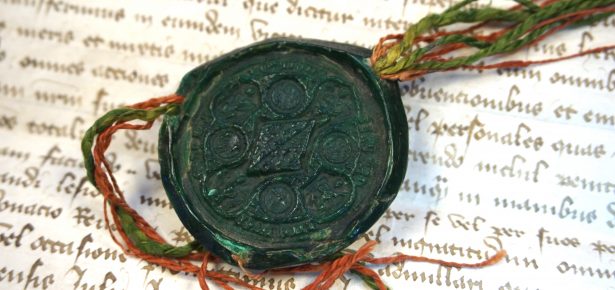
What did it mean to be a prince in the Middle Ages? During the Hundred Years’ War (c. 1337–1453), the kingdom of France contained a number of powerful duchies and counties, such as Brittany in the west, Burgundy to the east, and Armagnac down south. These principalities were technically subservient to the French king, but enjoyed a large degree of autonomy in practice. Accordingly, the usual way historians have tried to understand the power dynamics of these dukes and counts was to see how much like a king they themselves managed to become.
In my book, Princely Power in Late Medieval France: Jeanne de Penthièvre and the War for Brittany, I was interested in a different side to that story. Jeanne de Penthièvre, became duchess of Brittany in 1341 after her uncle, Duke Jean III, died without children; but her claim to inherit was challenged by her other uncle, Jean de Montfort, a dispute that sparked 24 years of civil war. Although Jeanne ultimately lost that fight and surrendered her title by treaty in 1365, her lengthy, contested career as duchess is a great opportunity to rethink the expectations surrounding princely power.
My research uses Jeanne’s surviving charters, letters, and legal documents to examine her exercise of power, such as managing her lands and money both in Brittany and beyond; maintaining political and administrative relationships with her supporters in the duchy and allies (or even enemies) abroad; and of course, waging war and trying to secure her position as duchess. I was also interested in how Jeanne framed and justified her power in these official records, creating a formal image of herself as a ruler and legitimizing her authority. Her position as duchess was rooted in and shaped by contemporary practices and expectations, from acts of intercession and homage, or the structures of aristocratic families, to ideas of lordship and the political community.
But what I found across all these areas was that rather than sticking to a single model, successful rule depended more on being able to move between different norms, and even playing them off against each other to best advantage. Consider the idea of a king, which has been so often used as a metric for princely power: in broad strokes, this has meant a man exercising exclusive, sovereign authority (though it’s worth noting how even this typical image is being revised in current scholarship). Jeanne didn’t fit this mould in more ways than one: she was noble rather than royal, a woman, and she shared power with her husband Charles de Blois (at least until his death at the end of the war).
These three factors—social hierarchies, gender, and power-sharing—were influential in shaping Jeanne’s lordship of Brittany. However, they weren’t strict guidelines that determined what she could or couldn’t do. Instead, all three played out in different ways across Jeanne’s career, for not only were there multiple expectations attached to each factor individually, but there was also significant interplay between them in practice.
For instance, not long before Jeanne had been invested with the ducal title, women had been formally barred from inheriting the French throne (a point of contention that played in to the Hundred Years’ War itself). As a noblewoman rather than a queen, however, the weight of expectation was on Jeanne’s side: custom dictated that she could inherit the duchy of Brittany, so her non-royal status (and that of her duchy) worked to her advantage here.
Furthermore, Jeanne could actively use different norms as political tools to influence events as they unfolded. Sometimes, she would invoke her husband’s authority in her own charters, saying she couldn’t issue any definitive orders without him. But in reality, she regularly made decisions on her own, so this appeal to co-rulership looks more like an excuse for avoiding disadvantageous concessions she didn’t want to make.
Jeanne’s career sheds new light on how the social expectations surrounding rank, gender, and collaborative rulership were far from absolute. Instead, they were highly conditional, depending on the context in which they appeared and, indeed, their usefulness to the different people involved. This perspective helps us redefine the authority of late medieval princes, seeing it as a flexible process of negotiation rather than the imposition of an arbitrary standard.
Moreover, because even this one lived experience of lordship branched out in so many directions, Jeanne’s case helps us reflect on how we tackle the wider dynamics of power in premodern society. The structures of political authority encompassed a range of roles and rested on multifaceted social bases. By embracing this complexity, we can revisit and reinvigorate the historiographical narratives defining even the most apparently conventional of aristocratic roles.
Latest Comments
Have your say!